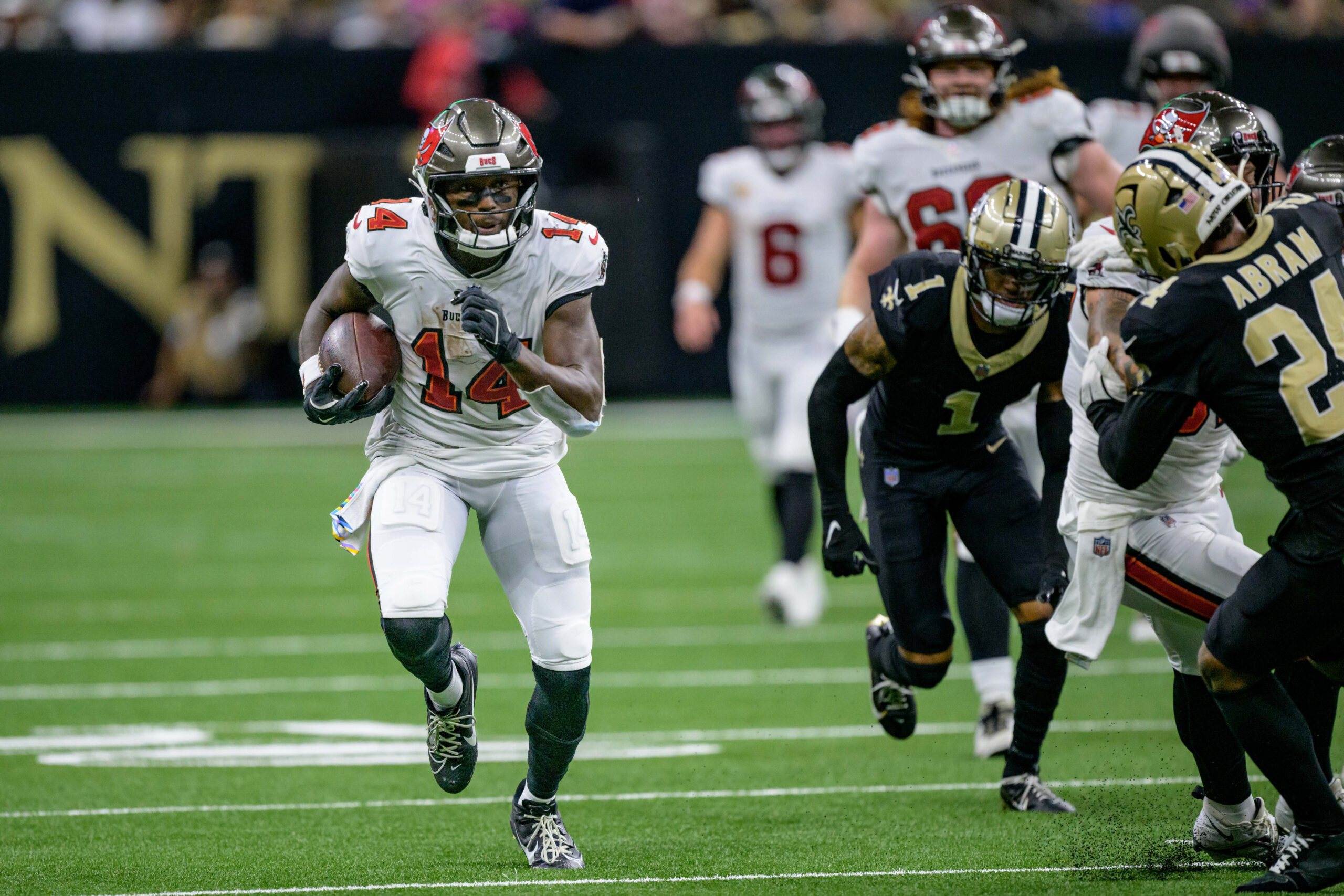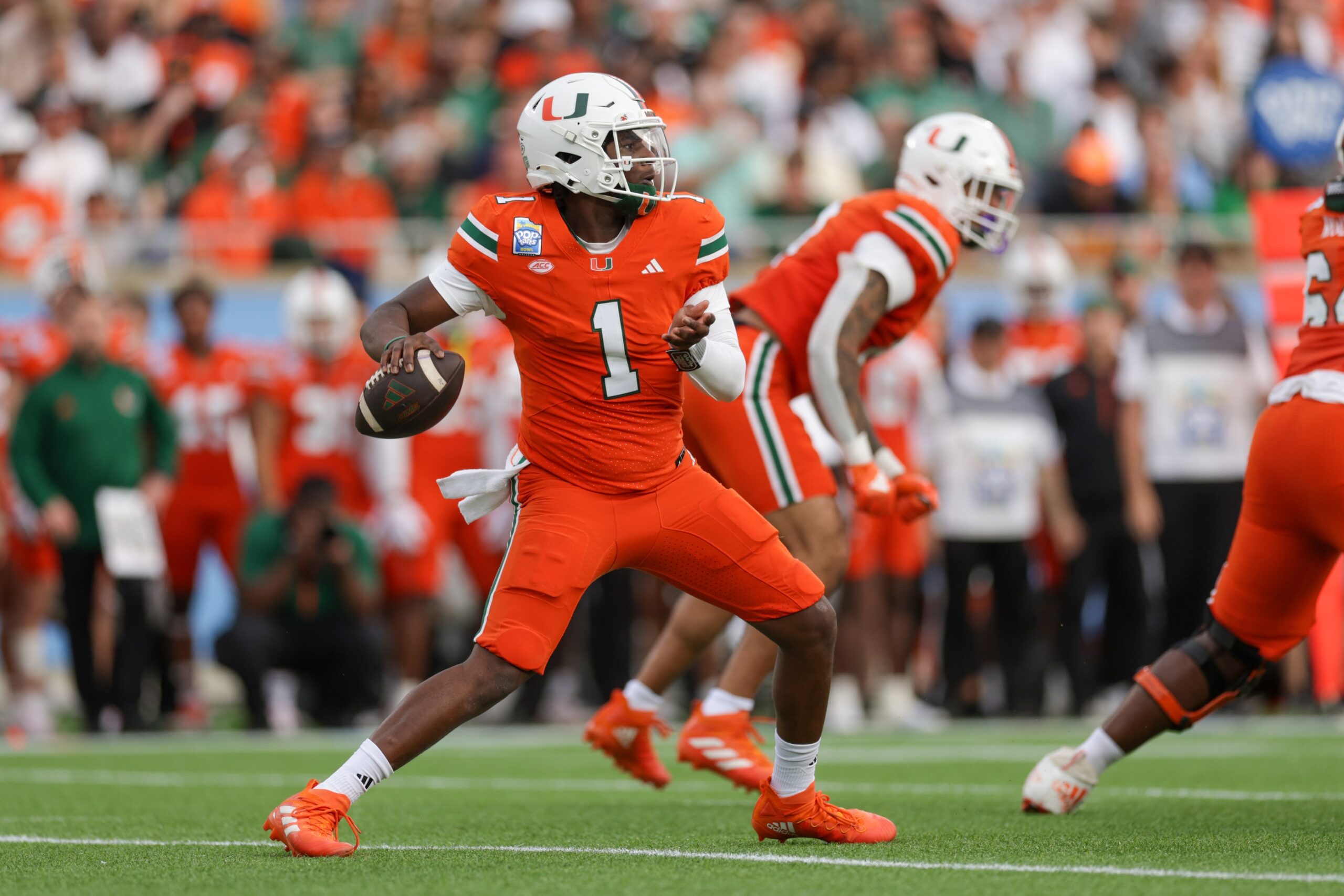NFL Analysis
7/25/24
9 min read
Ranking The Top 10 Draft Classes In NFL History

The NFL draft is a landmark moment of every NFL season. There's no better opportunity for teams to overhaul their future outlook than to add impactful young players. The NFL's first draft came in 1936 and has since evolved to help balance the league's competitiveness across all 32 teams.
However, not all NFL draft classes are equal. Even when certain classes seem especially strong, it takes years for the full fruit to bear out and be seen. Other years have brought a slew of Hall of Famers, Super Bowl MVPs, and All-Pros.
Which NFL draft classes are the best of all time? We've thumbed through the accomplishments of each class to bring you the top 10 draft years ever.
Best NFL Draft Classes in History
We prioritized accomplishments such as Hall of Fame status, All-Pro and Pro Bowl honors, individual award winners, and the class' impact on the game.
10. 2007
If you were born in the 1990s, then you grew up with the 2007 NFL Draft class making a big impact on your football experience. Thirty-five Pro Bowl appearances came from a group that included five dominant stars: Calvin Johnson, Adrian Peterson, Joe Thomas, Darrelle Revis, and Patrick Willis.
Each is already or will be a Hall of Famer.
Marshawn Lynch’s 34th birthday is a good reason to watch the BeastQuake again. (Jan. 8, 2011) @MoneyLynch pic.twitter.com/sHmw5hfAJq
— NFL Legacy (@NFLLegacy) April 22, 2020
There were some huge busts in this class as well, with JaMarcus Russell, Gaines Adams, and Amobi Okoye standing out. However, it is better to focus on high-end starters who complement the All-Pro candidates. Marshal Yanda, Eric Weddle, Joe Staley, and Marshawn Lynch headline a deep class that carried an era.
9. 1968
In addition to producing Super Bowl MVP and Hall of Famer Larry Csonka, the 1968 NFL Draft class marked the second joint NFL-AFL draft. A whopping eight total Hall of Famers emerged from this class, including Csonka, Ken Stabler, Art Shell, Charlie Sanders, Curley Culp, Elvin Bethea, and Ron Yary. Harold Jackson and Russ Washington also had strong arguments to make it to Canton, but they fell short.
Overall, Stabler's and Csonka's contributions to the game are immeasurable as faces of iconic franchise runs. The rest of the class was filled with meat-and-potatoes types, with five offensive linemen headline the highest approximate values added.
However, the blend and depth of impact established the Oakland Raiders and Miami Dolphins and further enhanced the dominance of the Dallas Cowboys in later years.
8. 2004
Despite being headlined by three Hall of Fame quarterbacks, the 2004 NFL Draft produced 15 All-Pro nominations by players other than Ben Roethlisberger, Eli Manning, and Philip Rivers.
Backyard football with @_BigBen7.
— NFL Legacy (@NFLLegacy) March 2, 2022
Wishing Ben Roethlisberger a happy 40th birthday! pic.twitter.com/RF9FVI1qov
Those three quarterbacks had major roles in the most competitive quarterback era we've ever seen. Even if the collective quarterback group consistently fell short of Tom Brady and Peyton Manning, the NFL's parity was unrivaled in their era.
There's a ton of depth across the 2004 class as well. Jared Allen should be a Hall of Famer, and Larry Fitzgerald is a lock. For years, Vince Wilfork, Karlos Dansby, Steven Jackson, and Matt Schaub were franchise players. Bob Sanders and Sean Taylor were also incredibly talented playmakers.
With 30 players earning at least one Pro Bowl and the importance of the quarterbacks drafted, the 2004 class just recently fell out of the NFL news cycle. But it'll forever be a key class.
7. 1989
The 1989 draft class had a high peak but not much depth. That's alright when some of the best players of all time changed how a position was viewed. Hall of Famers Deion Sanders, Barry Sanders, and Steve Atwater are at or near the top names ever to play their respective positions.
Derrick Thomas and Troy Aikman weren't slouches as Hall of Famers either, proving to be foundational pieces for the Chiefs and Cowboys, respectively. Andre Rison and Eric Metcalf were great playmakers. Carnell Lake, Steve Wisniewski, Mark Stepnoski, Trace Armstrong, and Wayne Martin were also high-end contributors who racked up Pro Bowls throughout their careers.
6. 1981
The greatest defensive draft class entered the league in 1981. Arguably, the best defender ever, Lawrence Taylor, was taken No. 2 overall. Ronnie Lott, the best safety of all time, went No. 8. Fellow Hall of Fame defenders Mike Singletary, Rickey Jackson, and Howie Long were also taken in this class.
The legendary flat top turns 62 today. Happy birthday to Hall of Famer Howie Long!
— NFL Legacy (@NFLLegacy) January 6, 2022
☠️ Super Bowl XVIII champion
☠️ 8x Pro Bowler
☠️ 1985 Defensive Player of the Year
☠️ NFL 1980s All-Decade Team pic.twitter.com/C7y7VbsH9G
They were far from the only stars produced. Russ Grimm and Kenny Easley are Hall of Famers, making a combined six All-Pro teams and nine Pro Bowls. Hanford Dixon, Freeman McNeil, George Rogers, Dexter Manley, Neil Lomax, James Brooks, and Cris Collinsworth filled out this deeply talented crop.
>> READ MORE: Ranking The NFL's Best All-Time Defenders
5. 1967
The top of the 1967 draft stunk, as Clint Jones and Steve Spurrier were busts taken No. 2 and No. 3, respectively. But over the course of the full draft, eight Hall of Famers emerged and made a massive impact during the best years several franchises have enjoyed.
That started with Miami Dolphins legend Bob Griese, who went fourth overall.
Alan Page, Gene Upshaw, Len Barney, Ken Houston, Willie Lanier, Rayfield Wright, and Floyd Little round out the remaining Hall of Famers you should know just from this class. Zero Super Bowl MVPs came out of the group, but this class also had the unique accomplishment of producing two major NBA stars as well. Pat Riley and Jimmy Walker never played in the NFL but were selected 285th and 445th overall.
4. 1996
The top three selections of 1996 were strong, featuring Keyshawn Johnson, Kevin Hardy, and Simeon Rice. However, the best were scattered throughout the rest of the class. Ray Lewis, the best linebacker in NFL history, was joined in Canton by two all-time receivers, Marvin Harrison Sr. and Terrell Owens, Zach Thomas, Brian Dawkins, and Jonathan Ogden.
After relocating from Cleveland to Baltimore, Lewis and Ogden shaped the Ravens' dominant presence. The class depth went far beyond this impressive group of headliners, as Willie Anderson, La'Roi Glover, Muhsin Muhammad, Jon Runyan, Eric Moulds, Lawyer Milloy, Eddie George, Mike Alstott, and Joe Horn were bonafide stars.
Eight players made at least three All-Pro teams throughout their careers. This class only lacked a high-end quarterback in its ranks.
3. 1957
There were only 12 teams in 1957, so it's incredible how the first round produced four Hall of Famers. Then add the five others who became Hall of Famers from this crop, and it's easy to see why the 1957 class was historic. But the cherry on top is still coming.
▪️8x All-Pro
— NFL Legacy (@NFLLegacy) February 17, 2020
▪️3x NFL MVP
▪️104.3 rushing yards per game (NFL record)
▪️Eight-time rushing leader (NFL record)
▪️First ever with 10,000 career rush yards
▪️First ever with 100 career rush TD
Happy birthday to the legendary @JimBrownNFL32! 🙌 @Browns pic.twitter.com/cz1IMHA9s9
Paul Hornung, Jim Brown, Len Dawson, Sonny Jurgensen, and Don Maynard each greatly influenced the NFL's history. Cleveland produced three Hall of Famers alone, plus Brown is arguably the best rusher ever to play.
With this class, the league took a massive step upward in the level of competition and quality of the product, shaping what happened in the next decade until the NFL and AFL merged.
2. 1964
The 1964 class has the lone claim of producing double-digit Hall of Famers. Ten picks earned their way into Canton, and Super Bowl MVP Roger Staubach is at the top of the class. Like the other best classes, the top stars headlined an entire era, even beyond the gold jacket members.
Six of the top 18 picks became Hall of Famers, and first-rounders Dave Parks and Bill Munson weren't far from making it with them. Paul Warfield, Paul Krause, and Carl Eller have some of the most impressive standings in NFL record books today. This class had everything from individual stars to the formation of powerful teams.
Conference championship round great performances: January 2, 1972 WR Paul Warfield scorches the Colts for 125 yards & a TD. Dolphins advance to Super Bowl VI with 21-0 win. pic.twitter.com/SV5IAbFyAh
— Dolphins History (@DolphinsHistory) January 26, 2023
Warfield and Leroy Kelly shaped the Browns before the former boosted the Dolphins in the 1970s. The Cowboys added Staubach, Mel Renfro, and Bob Hayes. Washington unearthed Krause and Charley Taylor, and Minnesota eventually added Krause to go with Eller in later years.
In total, the 1964 group had 32 All-Pro nominations, plus the contributions of elite players despite not earning those individual accolades. The Boomer generation grew up with these stars shaping modern football at its roots.
1. 1983
The 1983 NFL Draft lacked nothing. Representation was everywhere, from incredible, league-changing playmaking to star power, individual records, and team accomplishments. The eight Hall of Famers list is a who's who, featuring John Elway, Eric Dickerson, Dan Marino, Jim Kelly, Bruce Matthews, Darrell Green, Richard Dent, and Jimbo Covert.
Darrell Green could run down anyone 💨💨 @darrellgreen28 pic.twitter.com/SBasUisfCu
— NFL Legacy (@NFLLegacy) July 12, 2019
Matthews is one of the most accomplished blockers of all time, while Marino and Elway are two of the most physically dominant passers ever. Dickerson and Green are among the most entertaining and talented players at their positions. Dent won Super Bowl MVP and finished his career with 137.5 sacks.
The quality of the class goes well beyond these megastars. Curt Warner was a fantastic back in Seattle, while Joey Browner, Albert Lewis, Henry Ellard, and Roger Craig were others who enjoyed massively successful careers.








